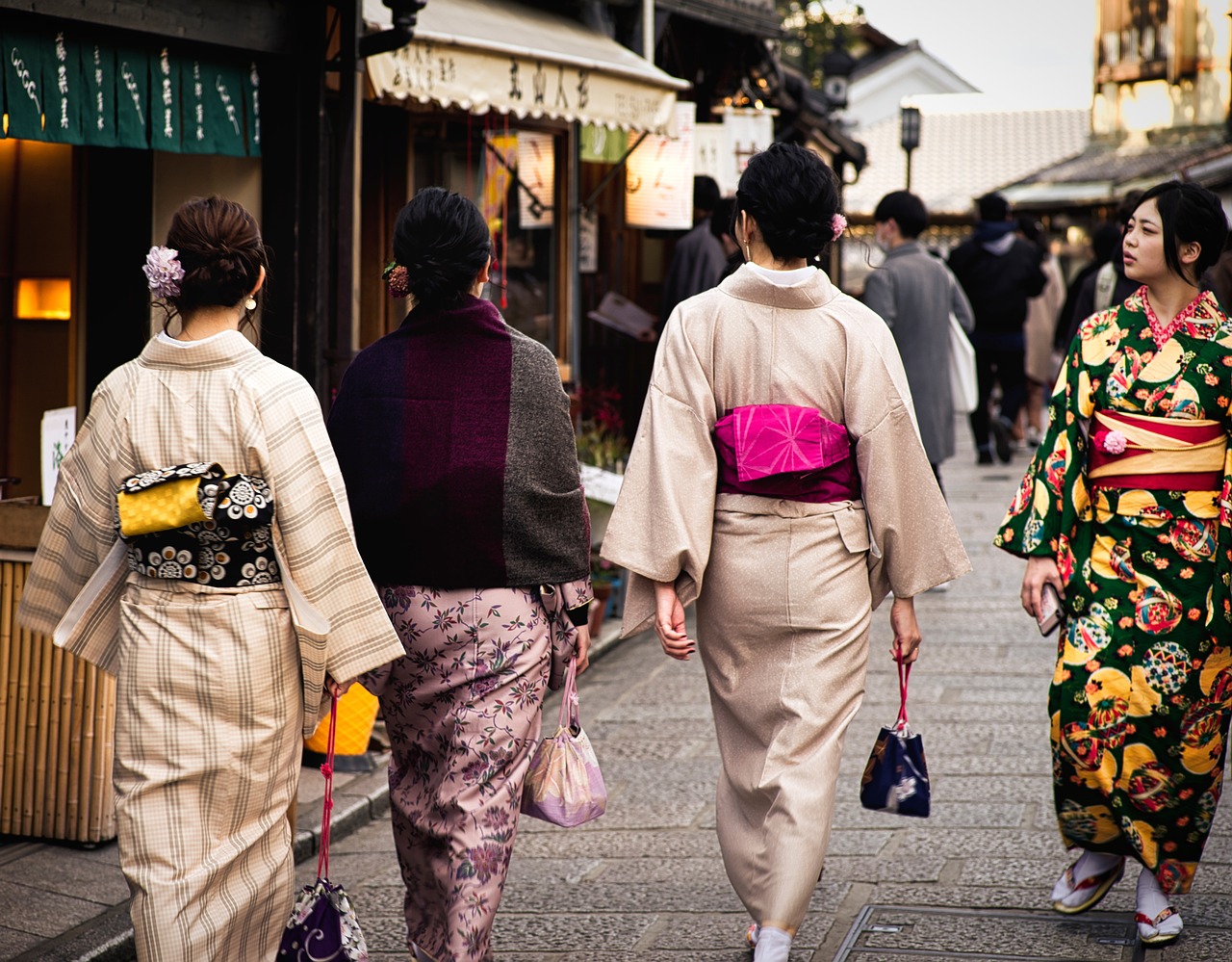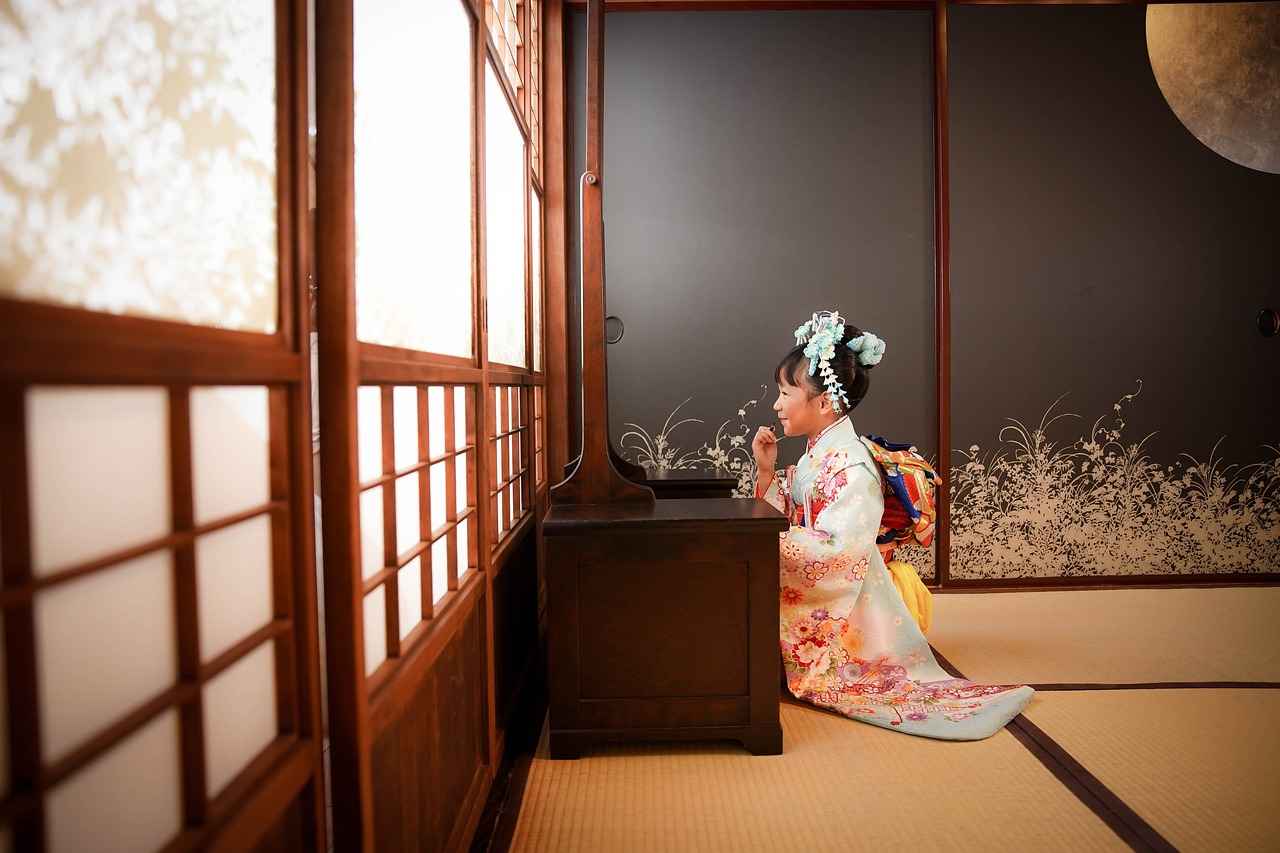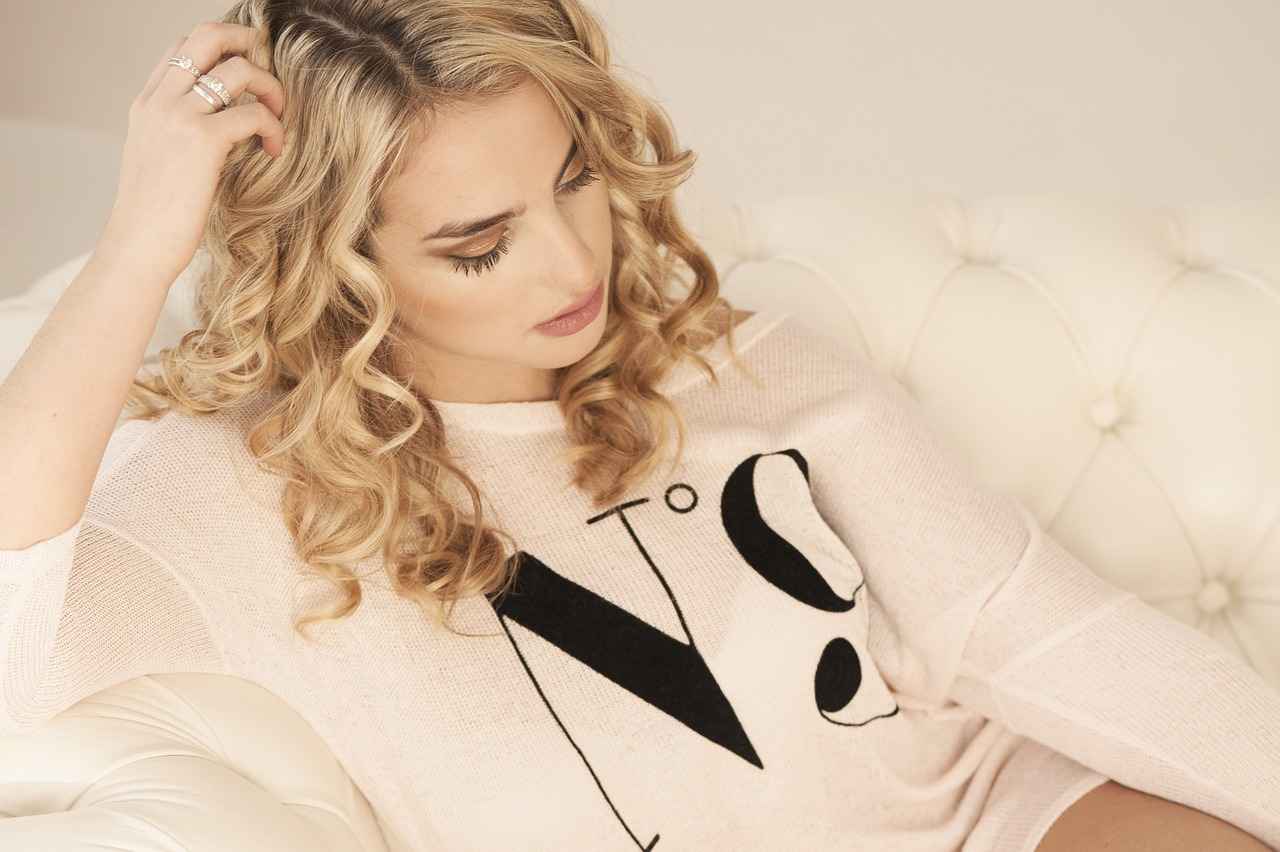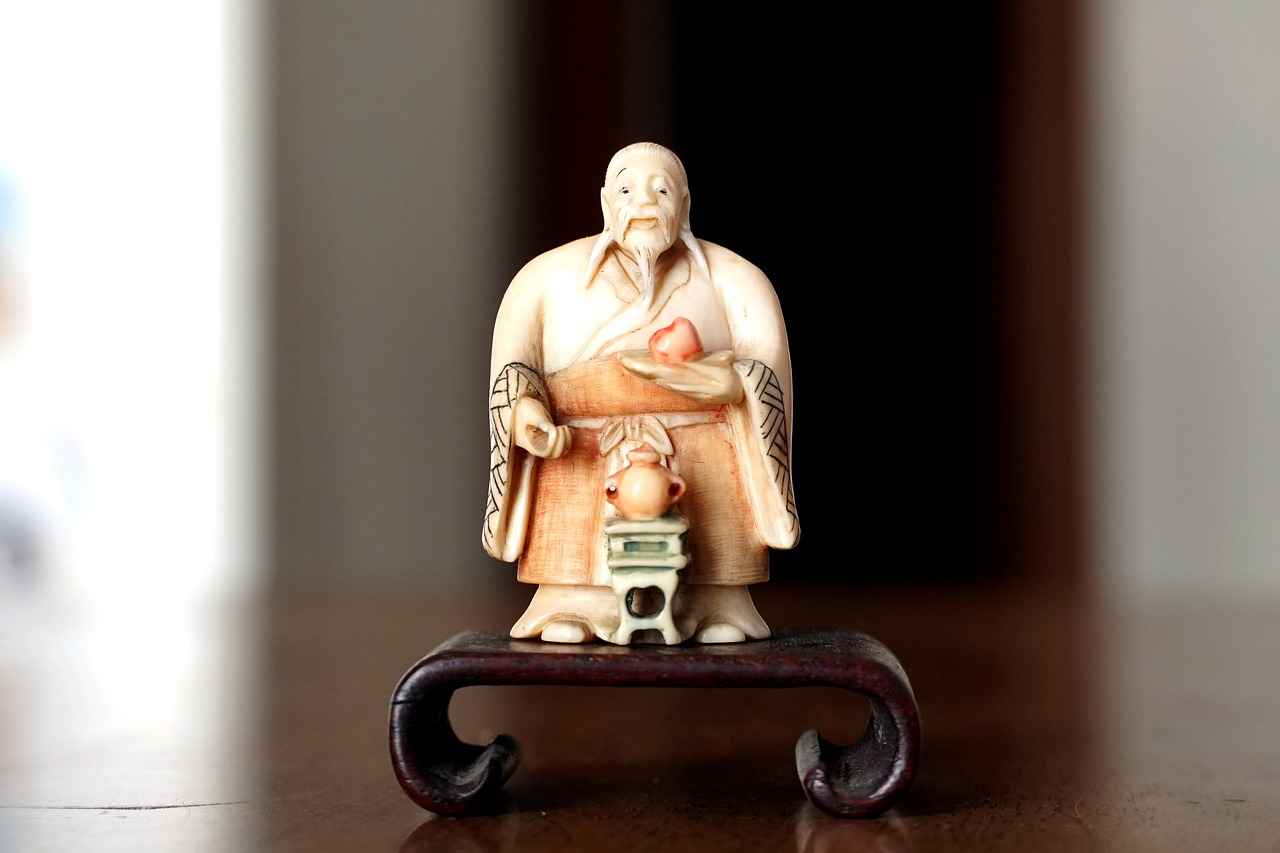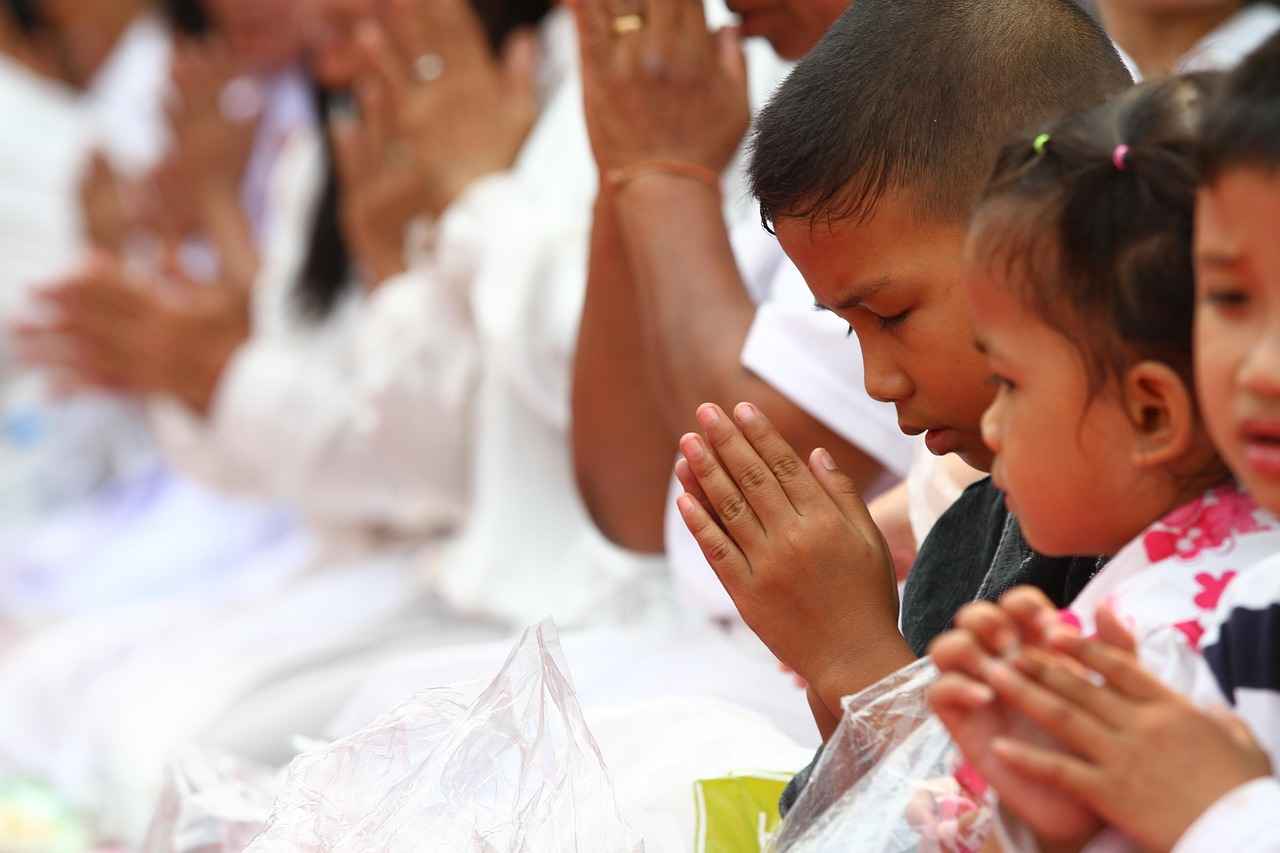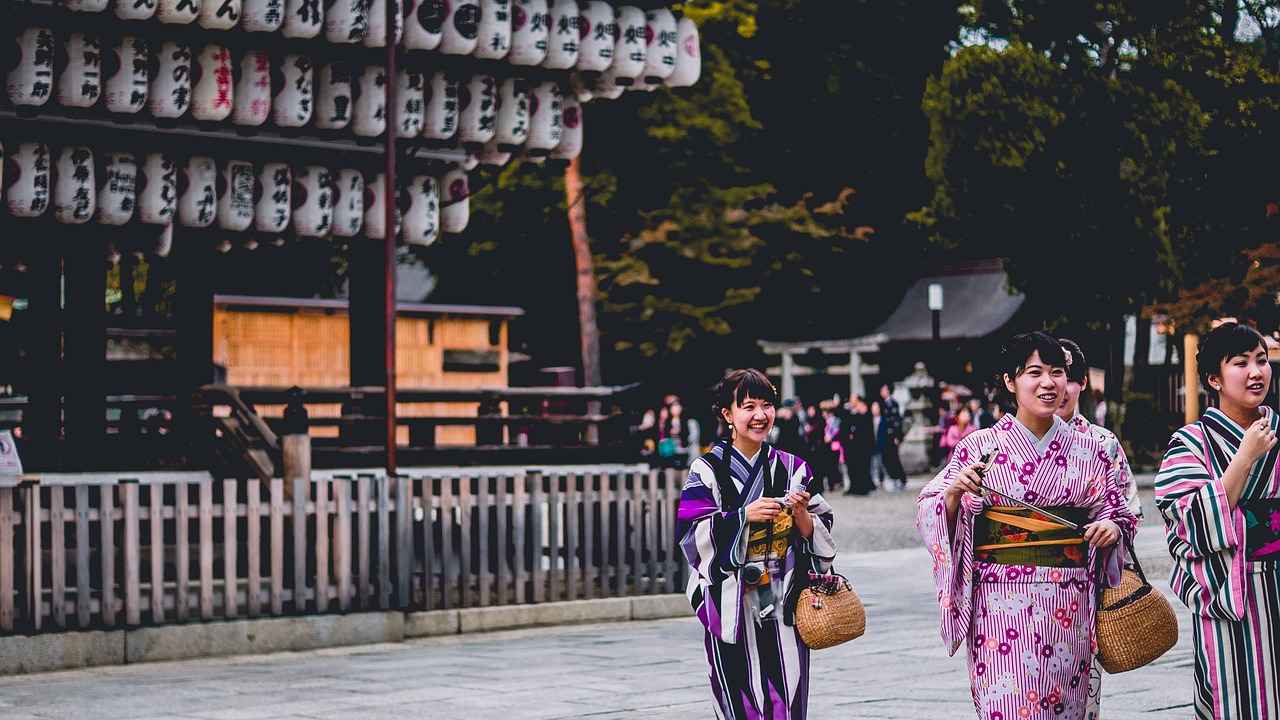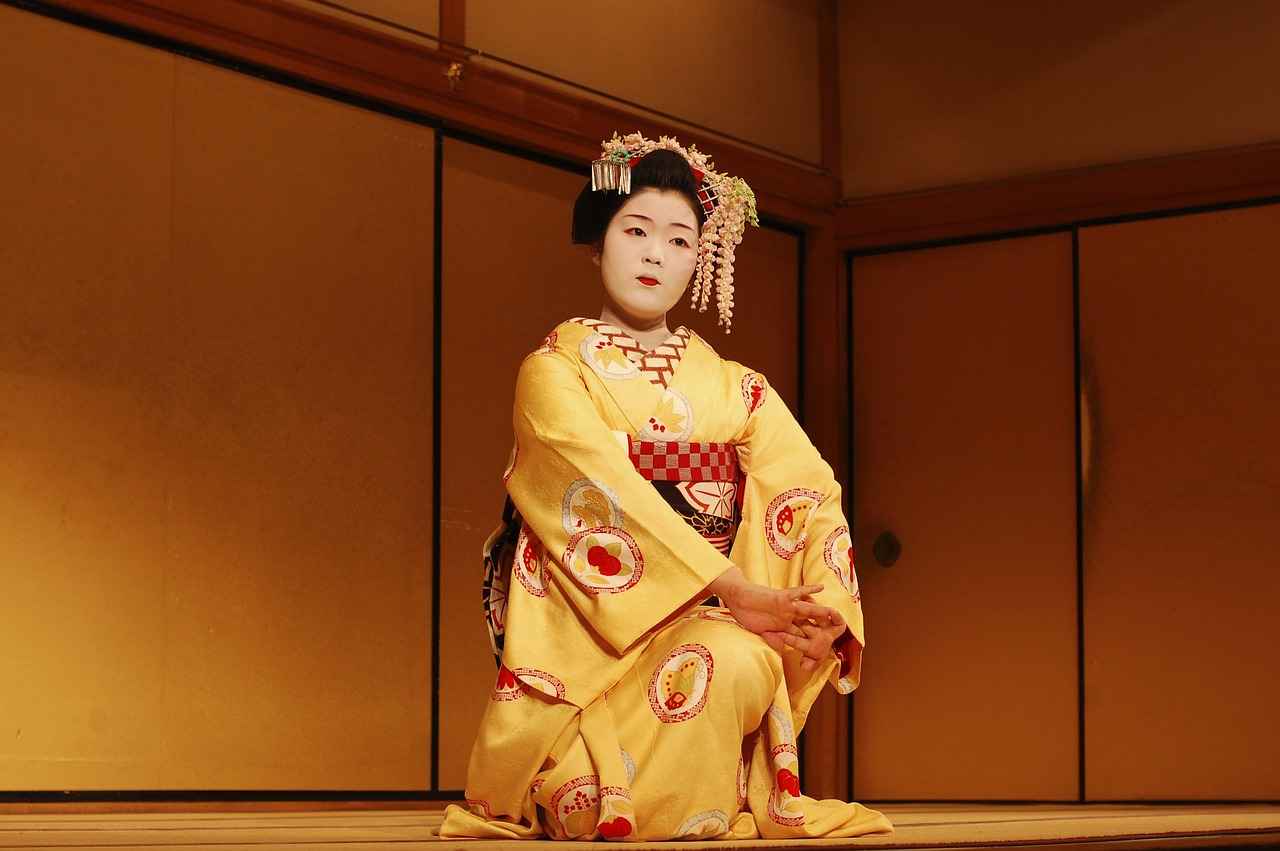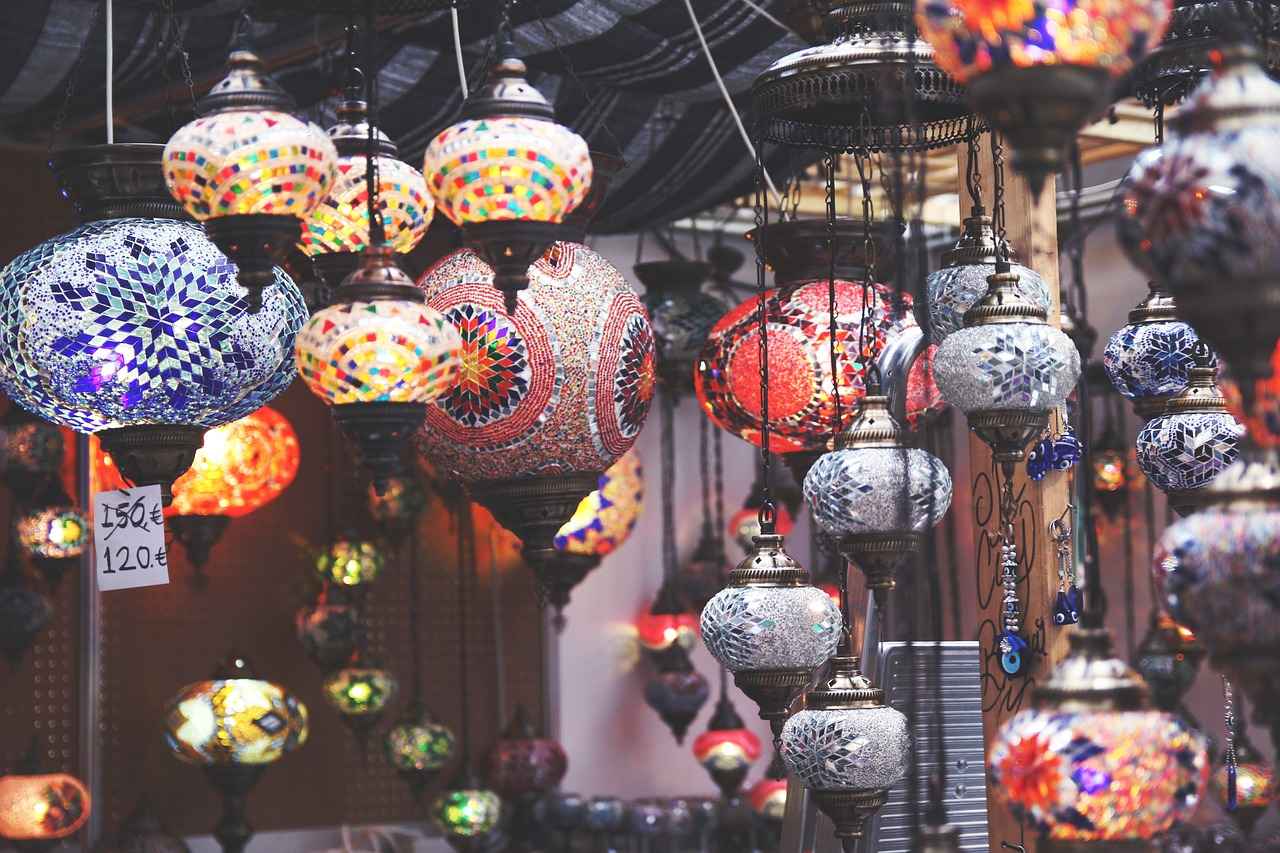This article delves into selecting the perfect kimono for various special occasions. By exploring different styles, fabrics, and the cultural significance behind each choice, we aim to help you make an informed and stylish decision.
Understanding Kimono Types
- Formal Kimonos: Typically worn for ceremonies and weddings, these kimonos are often made from luxurious fabrics and feature intricate designs.
- Casual Kimonos: Perfect for everyday wear or informal gatherings, these kimonos are usually simpler in style and made from lighter materials.
Choosing the Right Fabric
The fabric of your kimono significantly impacts its overall appearance and comfort. Here are some popular options:
- Silk: Known for its luxurious feel and sheen, silk is ideal for formal occasions.
- Cotton: A versatile choice suitable for both casual and semi-formal events.
- Polyester: Often more affordable and easier to care for while still looking great.
Color and Pattern Selection
Choosing the right color and pattern is crucial to making a statement. Consider the following:
- Seasonal Trends: Colors can vary with the seasons; keep an eye on current trends.
- Traditional Patterns: Each pattern carries its own cultural significance, adding depth to your selection.
Accessorizing Your Kimono
Accessories can elevate your look. Essential items include:
- Obi: The sash that holds the kimono together, available in various styles.
- Footwear: Choose traditional sandals or modern options that complement your outfit.
Understanding Kimono Etiquette
Familiarizing yourself with kimono etiquette enhances your experience:
- Occasions: Kimonos are best worn at weddings, festivals, and important family gatherings.
- Wearing Techniques: Learn the proper way to wear a kimono for a polished look.
Renting vs. Buying a Kimono
Deciding whether to rent or buy can be challenging:
- Renting: A cost-effective option for one-time events.
- Buying: A long-term investment that allows for personal expression.
Conclusion: Making Your Choice
In conclusion, selecting the right kimono involves careful consideration of style, fabric, color, and accessories. Use this guide to navigate your options and make an informed decision for your special occasion.
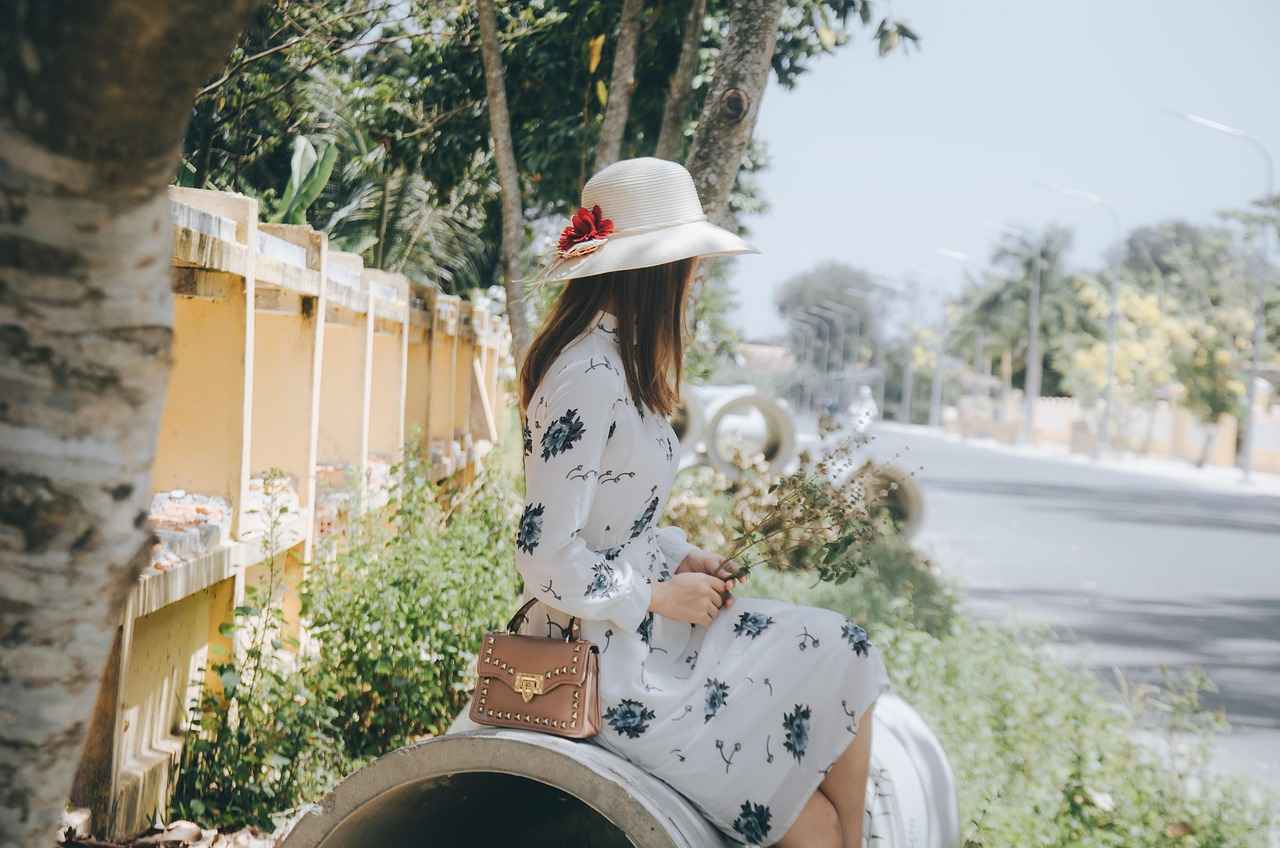
Understanding Kimono Types
Kimonos are not just garments; they are a symbol of Japanese culture and heritage. When selecting a kimono, it is essential to understand the various types available, as each serves a different purpose and occasion. This guide will help you navigate the world of kimonos, ensuring you choose the right one for your special event.
- Formal Kimonos: These are typically worn during significant events such as weddings, tea ceremonies, and other ceremonial occasions. The most common types include:
- Furisode: Characterized by long sleeves, this kimono is worn by young women and is often seen at coming-of-age ceremonies.
- Tomosode: A formal kimono for married women, featuring shorter sleeves and elegant designs.
- Homongi: Suitable for both married and unmarried women, this kimono is often worn during celebratory events.
- Casual Kimonos: These are perfect for everyday wear or informal gatherings. They include:
- Yukata: A lightweight cotton kimono typically worn in summer festivals, known for its vibrant colors and patterns.
- Hifu: A casual kimono that is often worn at home or during relaxed outings.
- Seasonal Variations: Kimonos can also vary with the seasons, featuring lighter fabrics and brighter colors in summer and heavier materials with darker hues in winter.
Understanding these different types of kimonos will help you select the appropriate style that fits your occasion best. Whether you are attending a formal event or enjoying a casual day out, there is a kimono that perfectly matches your needs.

Choosing the Right Fabric
The fabric of a kimono is not just a matter of aesthetics; it significantly influences both the appearance and comfort of the garment. When selecting a kimono for a special occasion, understanding the various fabrics available is essential. This guide will explore some of the most popular fabrics used in kimonos and their suitability for different events.
- Silk: Renowned for its luxurious feel and elegant drape, silk kimonos are ideal for formal events such as weddings and ceremonies. The fabric’s natural sheen enhances the overall look, making it a top choice for special occasions.
- Cotton: A versatile and breathable option, cotton kimonos are perfect for casual outings or summer festivals. They provide comfort and ease of movement, making them suitable for both relaxed and semi-formal settings.
- Polyester: This synthetic fabric offers durability and low maintenance, making it a practical choice for everyday wear. Polyester kimonos can mimic the appearance of silk while being more affordable and easier to care for.
When selecting a fabric, consider the event type and the weather conditions. For instance, a silk kimono might be perfect for a winter wedding, while a cotton kimono would be more suitable for a summer picnic. Additionally, the color and pattern of the fabric can also impact your choice, as certain designs may be more appropriate for specific occasions.
In conclusion, the fabric of a kimono plays a pivotal role in determining its suitability for various events. By understanding the characteristics of different fabrics, you can make an informed choice that aligns with your style and the occasion. Whether you opt for the luxurious feel of silk or the practicality of cotton, selecting the right fabric will ensure that you look and feel your best.
Silk Kimonos
are often regarded as the epitome of luxury and elegance in traditional Japanese attire. Their rich texture and beautiful sheen make them a favored choice for special occasions, such as weddings, tea ceremonies, and formal gatherings. Understanding the qualities of silk can help you decide when to choose this exquisite fabric for your next event.
One of the most notable characteristics of silk is its softness. This natural fiber feels incredibly smooth against the skin, providing comfort even during extended wear. Additionally, silk has a natural luster that enhances the visual appeal of the kimono, making it stand out in any setting. The fabric also drapes beautifully, allowing for graceful movement, which is essential for the traditional kimono style.
When selecting a silk kimono, consider the occasion. For formal events, a silk kimono with intricate patterns or embroidery can convey sophistication and respect for cultural traditions. In contrast, simpler designs may be more appropriate for less formal gatherings. It’s also important to note that silk kimonos are often more expensive than those made from other materials, so investing in one should align with the significance of the occasion.
Another factor to consider is the season. Silk is a breathable fabric, making it suitable for both warm and cooler weather. However, during extremely hot temperatures, you might opt for lighter fabrics like cotton. If you choose silk, ensure that the kimono is designed for the season, perhaps with lighter weights for summer and richer colors for winter.
In conclusion, silk kimonos are a timeless choice that embodies luxury and tradition. When choosing silk for your special occasion, consider the event’s significance, the design of the kimono, and the season to ensure you make the perfect selection. A silk kimono not only enhances your appearance but also pays homage to the rich cultural heritage of Japan.
Care and Maintenance of Silk
Proper care is essential for maintaining the beauty and integrity of silk kimonos. These exquisite garments are a symbol of elegance and tradition, and with the right practices, you can ensure their longevity and vibrant appearance.
First and foremost, cleaning silk kimonos requires special attention. It is highly recommended to hand wash your kimono in cold water using a gentle detergent specifically designed for silk. Avoid using bleach or harsh chemicals, as they can damage the delicate fibers. If you prefer professional cleaning, choose a dry cleaner with experience in handling silk garments.
When washing your kimono, always turn it inside out to protect the outer fabric from friction and fading. Gently agitate the water without wringing or twisting the fabric, as this can lead to creases or tears. After washing, rinse thoroughly in cold water to remove all detergent residues.
After cleaning, it is important to dry your silk kimono properly. Lay it flat on a clean, dry towel and roll it up to absorb excess water. Avoid hanging it to dry, as this can stretch the fabric. Once most of the moisture is gone, hang it in a shaded area to air dry completely, away from direct sunlight to prevent color fading.
Storing your silk kimono correctly is equally important. Always store it in a cool, dry place, ideally in a breathable garment bag to protect it from dust and insects. Avoid plastic bags, as they can trap moisture and lead to mold growth. If possible, use padded hangers to maintain the shape of the kimono without causing creases.
Lastly, be mindful of temperature and humidity. Extreme conditions can damage silk fabric, so aim for a stable environment. Regularly check your kimono for any signs of wear or damage, and address any issues promptly to keep it in pristine condition.
By following these best practices, you can enjoy your silk kimono for many years to come, preserving its elegance and cultural significance.
Alternatives to Silk
When it comes to choosing the right kimono for your special occasion, the fabric you select can significantly impact both the look and feel of your outfit. While silk is often regarded as the pinnacle of luxury, there are several alternatives that offer practicality without sacrificing aesthetic appeal. This section will delve into the benefits of fabrics like cotton and polyester, which are excellent choices for various events.
Cotton is a natural fabric that is breathable and comfortable, making it an ideal choice for warmer climates or casual gatherings. Cotton kimonos come in a variety of colors and patterns, allowing for versatility in styling. They can be easily dressed up or down, making them suitable for both casual outings and more formal occasions. Additionally, cotton is easy to care for, requiring minimal maintenance compared to silk.
Polyester kimonos are another practical option, particularly for those seeking durability and affordability. This synthetic fabric is resistant to wrinkles and fading, which makes it perfect for travel or long events where you want to maintain a polished appearance. Polyester can also mimic the luxurious feel of silk, offering a similar aesthetic at a fraction of the cost. Moreover, it is often machine washable, providing ease of maintenance that busy individuals will appreciate.
Both cotton and polyester kimonos can be found in a range of styles and designs, ensuring that you can find the perfect piece that aligns with your personal taste. Whether you are attending a traditional ceremony or a modern celebration, these fabrics offer the flexibility to look chic while being comfortable. By opting for these alternatives, you can enjoy the best of both worlds: style and practicality.
In summary, while silk remains a popular choice for kimonos, exploring fabrics like cotton and polyester can provide you with practical options that still deliver on aesthetic appeal for any occasion. Embrace these alternatives and find the perfect kimono that fits your needs.
Cotton Kimonos
are not only versatile but also provide a high level of comfort, making them an ideal choice for various occasions. Whether you’re dressing for a casual outing or a semi-formal event, cotton kimonos can be styled in numerous ways to suit your needs.
One of the most appealing aspects of cotton kimonos is their breathability. This fabric allows for air circulation, ensuring you stay cool and comfortable, especially during warmer months. Additionally, cotton is easy to care for, making it a practical choice for those who want a low-maintenance yet stylish outfit.
When it comes to styling cotton kimonos, the options are virtually limitless. For a casual look, consider pairing your kimono with a simple t-shirt and jeans. This combination creates a relaxed yet chic outfit perfect for weekend brunches or casual get-togethers with friends. You can also accessorize with statement jewelry or a stylish tote to elevate the look.
For semi-formal events, cotton kimonos can be dressed up with the right accessories. Opt for a fitted dress or tailored trousers underneath your kimono for a polished appearance. Complement the outfit with a chic belt to define your waist and a pair of elegant heels to complete the look. Don’t forget to choose accessories that enhance your overall aesthetic, such as a delicate necklace or a pair of sophisticated earrings.
Moreover, cotton kimonos come in a variety of colors and patterns. This diversity allows you to select a piece that reflects your personal style while also being appropriate for the occasion. Whether you prefer vibrant prints or subtle tones, there’s a cotton kimono that can seamlessly integrate into your wardrobe.
In conclusion, cotton kimonos are a versatile and comfortable option that can be styled for both casual and semi-formal events. By understanding how to accessorize and combine them with different outfits, you can create a look that is uniquely yours while enjoying the comfort that cotton provides.

Color and Pattern Selection
is a crucial aspect of choosing the perfect kimono. The right colors and patterns can elevate your outfit, making a bold statement while reflecting your personal style. This guide will help you understand how to select colors that not only complement your skin tone but also suit the occasion.
When selecting a kimono, consider your skin tone. Generally, warm skin tones look great in earthy colors like reds, oranges, and yellows, while cool skin tones shine in blues, greens, and purples. To find the perfect match, try holding different colored fabrics up to your face and see which shades enhance your natural glow.
Additionally, occasion plays a vital role in determining your color choice. For formal events, opt for rich, deep hues or classic patterns like floral or geometric designs that convey elegance. Conversely, for casual outings, feel free to experiment with lighter shades and playful patterns that reflect a more relaxed vibe.
| Skin Tone | Recommended Colors |
|---|---|
| Warm | Reds, Oranges, Yellows |
| Cool | Blues, Greens, Purples |
Another important aspect is to stay updated on seasonal color trends. Each season brings a new palette that can influence your choice. For instance, spring often embraces pastels, while autumn favors rich, warm tones. Incorporating these trends can keep your look fresh and relevant.
Lastly, don’t overlook the significance of traditional patterns. Many kimono patterns carry cultural meanings, enhancing the storytelling aspect of your outfit. For example, Asanoha (hemp leaf) patterns symbolize growth and resilience, making them perfect for celebratory events.
In conclusion, selecting the right colors and patterns for your kimono is essential for making a memorable impression. By considering your skin tone, the occasion, seasonal trends, and cultural significance, you can confidently choose a kimono that resonates with your personal style.
Seasonal Color Trends
play a vital role in the world of fashion, particularly when it comes to traditional garments like the kimono. The colors of kimonos can indeed vary with the seasons, reflecting the changing beauty of nature. By staying updated on current trends, you can ensure that your kimono aligns with the seasonal palettes, enhancing your overall look and making a striking statement.
During spring, soft pastels such as light pinks, lavenders, and mint greens are popular, mirroring the blossoming flowers and fresh foliage. These colors evoke a sense of renewal and vitality, making them perfect for celebrations like hanami (flower viewing). In contrast, summer often calls for vibrant hues like deep blues, bright yellows, and bold reds, reminiscent of sunny days and festive summer events.
As the leaves change in autumn, richer tones such as burnt oranges, deep reds, and earthy browns come into play. These colors reflect the beauty of fall foliage and are perfect for occasions like harvest festivals. Finally, in winter, darker shades like navy, emerald green, and luxurious golds become prominent, often associated with formal events and celebrations during the holiday season.
To keep your kimono stylish and in tune with the seasons, consider the following tips:
- Research Current Trends: Follow fashion blogs and social media influencers who specialize in traditional Japanese attire for the latest color trends.
- Consider Occasions: Match your kimono color to the event you are attending, ensuring it resonates with the season and the spirit of the occasion.
- Complement Your Skin Tone: Choose colors that not only reflect the season but also enhance your natural complexion.
In conclusion, understanding and embracing is essential for selecting the right kimono. By aligning your choices with the seasonal palettes, you can express your personal style while honoring the cultural significance of this beautiful garment.
Traditional Patterns
in kimono design are not merely decorative; they are imbued with deep cultural significance that reflects the history and values of Japanese society. Each pattern tells a story, often linked to nature, seasons, or traditional folklore, and choosing the right design can add a layer of meaning to your kimono selection.
Some of the most popular designs include:
- Asanoha (Hemp Leaf): This geometric pattern symbolizes growth and resilience, making it a popular choice for celebrations and new beginnings.
- Seigaiha (Blue Ocean Waves): Representing peace and good fortune, this wave pattern is often used in formal kimonos.
- Uroko (Scales): This design, resembling fish scales, signifies protection and strength, commonly seen in children’s kimonos.
- Kiku (Chrysanthemum): A symbol of longevity and rejuvenation, the chrysanthemum pattern is often chosen for auspicious occasions.
Understanding these patterns allows you to select a kimono that resonates with your personal narrative or the message you wish to convey during a special event. For instance, if you are attending a wedding, opting for a kimono adorned with Seigaiha can symbolize your wishes for the couple’s happiness and prosperity.
Moreover, traditional patterns can also vary by season, with certain motifs being more prevalent in spring or autumn. This seasonal relevance not only enhances the aesthetic appeal of the kimono but also aligns with the cultural practice of celebrating the changing seasons in Japan.
In conclusion, when selecting a kimono, take the time to explore the various and their meanings. Doing so will not only enrich your experience but also ensure that your choice reflects the cultural heritage of this beautiful garment.
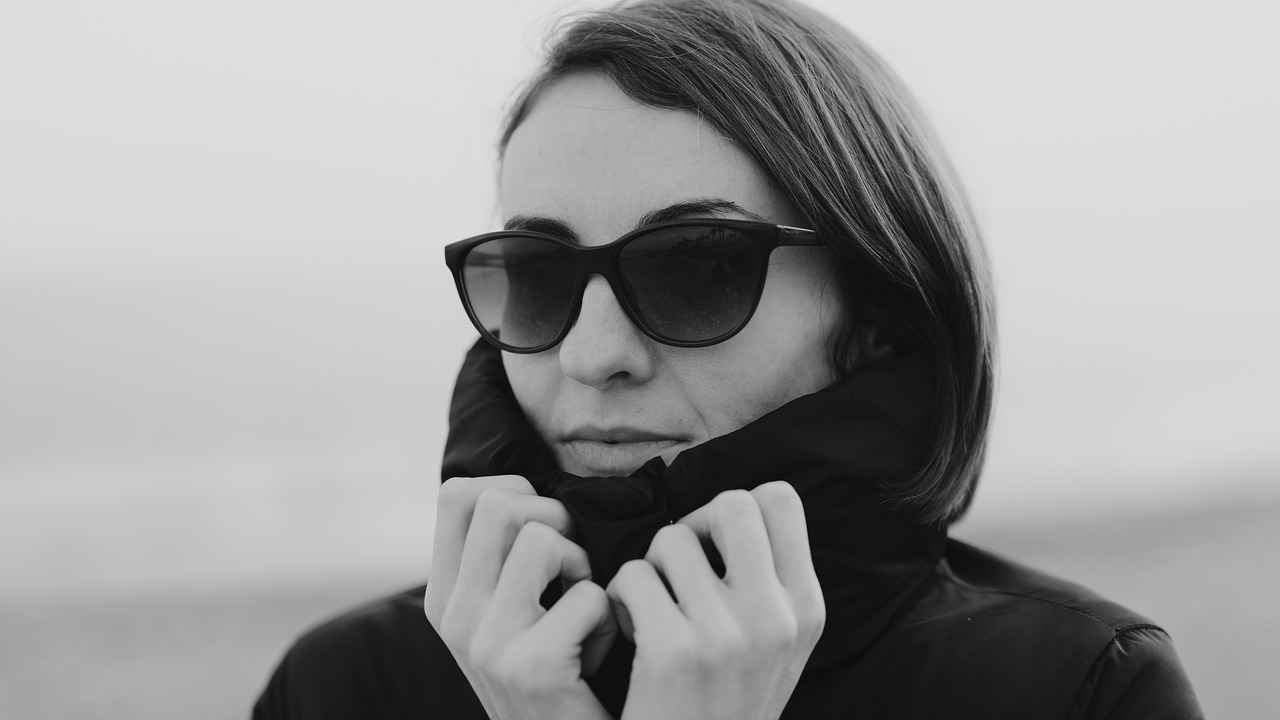
Accessorizing Your Kimono
is an essential step in creating a stunning and personalized look. The right accessories can not only enhance your outfit but also reflect your unique style. In this section, we will delve into the key accessories that can elevate your kimono experience.
- Obi: The obi is arguably the most important accessory when wearing a kimono. Available in various styles, widths, and colors, the obi can dramatically change the overall appearance of your outfit. Whether you choose a wide obi for a formal occasion or a narrow one for a casual look, it serves as a statement piece that ties your ensemble together.
- Footwear: Choosing the right footwear is crucial for both comfort and style. Traditional options like geta (wooden sandals) or zori (flat sandals) can complement your kimono beautifully. For a modern twist, consider pairing your kimono with stylish flats or low heels that offer comfort without sacrificing elegance.
- Haneri: This is a decorative collar that can be added to the kimono. It allows for a pop of color or pattern that can enhance the overall look. Haneri is a great way to express your personal style while maintaining the traditional essence of the kimono.
- Obijime: This is a decorative cord that secures the obi in place. Available in various colors and designs, the obijime can add an extra layer of detail to your outfit, making it more visually interesting.
- Jewelry: Subtle jewelry can enhance your kimono look without overwhelming it. Consider wearing delicate earrings or a simple bracelet that complements the colors of your kimono.
When accessorizing, it’s important to keep the balance in mind. Too many accessories can distract from the beauty of the kimono itself. Aim for a cohesive look by choosing accessories that harmonize with your outfit’s colors and patterns.
In conclusion, the right accessories can significantly enhance your kimono experience. By carefully selecting pieces that reflect your personal style, you can create a look that is both traditional and uniquely yours.
Obi Styles
The obi is an essential accessory that plays a significant role in the overall presentation of a kimono. It is more than just a functional piece; the obi can dramatically alter the style and elegance of your outfit. Understanding the various is crucial for anyone looking to elevate their kimono experience.
Obi styles can be categorized into several types, each with unique characteristics and cultural significance:
- Fukuro Obi: This is the most formal type of obi, often made from luxurious fabrics like silk. It is typically wider and longer, allowing for intricate tying styles. The fukuro obi is ideal for formal occasions such as weddings and ceremonies.
- Haneri Obi: A shorter obi that is often used for casual wear. It is easier to tie and manage, making it a popular choice for everyday use. The haneri obi can be adorned with vibrant patterns and colors, reflecting personal style.
- Obiage and Obijime: These are supplementary pieces that enhance the obi. The obiage is a decorative scarf placed under the obi, while the obijime is a cord that secures the obi in place. Both can be used to add layers of color and texture to your outfit.
- Maru Obi: A more traditional style, the maru obi is fully patterned on both sides, making it suitable for formal events. Its weight and structure provide a classic look that is often associated with the elegance of the kimono.
Choosing the right obi style can transform your kimono from simple to stunning. The choice of color, fabric, and style should align with the occasion and your personal aesthetic. For example, a vibrant haneri obi can add a playful touch to a casual kimono, while a luxurious fukuro obi can enhance the sophistication of a formal outfit.
In conclusion, the obi is not just a belt; it is a statement piece that can define the overall look of your kimono. By understanding the different obi styles available, you can make informed decisions that reflect your style and the significance of the occasion.
Footwear Choices
Footwear is a crucial element in completing your kimono look. The right pair of shoes can enhance your overall appearance, providing both comfort and style to match your kimono. Here, we explore the best footwear options that will help you achieve a harmonious and elegant look.
- Geta: These traditional wooden sandals are a popular choice for kimono wearers. Geta can elevate your height and add a touch of authenticity to your outfit. They come in various styles, from simple designs to more ornate ones adorned with colorful straps.
- Zori: Another traditional option, zori are flat sandals that offer greater comfort for longer wear. Made from materials like straw or synthetic fibers, they are versatile and can be paired with both formal and casual kimonos.
- Western Shoes: For a modern twist, many opt for elegant pumps or flats that complement the kimono’s colors and patterns. Choose neutral or pastel shades to maintain a cohesive look.
- Boots: In colder weather, stylish ankle boots can be a great alternative. They add a contemporary flair while keeping your feet warm. Opt for sleek designs that don’t overpower the kimono.
When selecting footwear, consider the occasion and comfort. If you’ll be attending a formal event, traditional options like geta or zori are ideal. For casual outings, modern footwear can provide the comfort you need without sacrificing style. Remember, the right footwear not only complements your kimono but also allows you to move gracefully and confidently.
In conclusion, your choice of footwear can significantly impact your overall kimono look. By considering both traditional and contemporary options, you can find the perfect pair that reflects your personal style while ensuring comfort throughout your day.

Understanding Kimono Etiquette
Wearing a kimono is not merely a fashion choice; it is a reflection of rich cultural heritage and traditions. To ensure you wear a kimono with the utmost respect and appreciation, it is essential to familiarize yourself with the etiquette surrounding this beautiful garment. Here, we will explore the key aspects of kimono etiquette, ensuring you are well-prepared for any occasion.
- Appropriate Occasions: Kimonos are typically worn during special events such as weddings, tea ceremonies, and festivals. Understanding when it is appropriate to wear a kimono is crucial for honoring the tradition.
- Fit and Style: Ensure that your kimono fits well and is styled correctly. Different types of kimonos serve various purposes, so choose one that aligns with the event’s formality.
- Layering: Traditionally, kimonos are worn with multiple layers, including an undergarment known as juban. Proper layering not only enhances the look but also shows respect for the garment.
- Obi Tying: The way you tie your obi (the sash) is significant. There are various styles of obi knots, each suitable for different occasions. Learning how to tie your obi correctly is essential for a polished appearance.
- Footwear: The choice of footwear is also important. Traditional footwear, such as geta or zori, should complement your kimono while providing comfort.
Respect Cultural Norms: Understanding and respecting cultural norms is paramount when wearing a kimono. This includes how to behave in a kimono, such as maintaining a graceful posture and avoiding overly casual actions. Additionally, always be mindful of the colors and patterns you choose, as they can convey different meanings and significance.
In conclusion, wearing a kimono is a beautiful way to connect with Japanese culture. By adhering to these etiquette guidelines, you can ensure that you wear your kimono with grace and respect, making your experience truly enriching.
When to Wear a Kimono
Wearing a kimono is not just about fashion; it is a celebration of tradition and culture. Understanding the right occasions to don this elegant attire can significantly enhance your experience. Here, we explore various events where wearing a kimono is not only appropriate but also highly appreciated.
- Weddings: Kimonos are commonly worn by guests and family members at Japanese weddings. The shiromuku (white kimono) is often chosen by brides, symbolizing purity, while guests may opt for colorful furisode styles.
- Festivals: During traditional festivals, wearing a kimono is a way to embrace cultural heritage. Events like Hanami (cherry blossom viewing) or Obon provide the perfect backdrop for this attire.
- Tea Ceremonies: The serene setting of a tea ceremony calls for a refined kimono. A simple yet elegant design enhances the experience, allowing participants to focus on the art of tea.
- Graduations: Many students wear kimonos during graduation ceremonies, especially in Japan. This signifies a transition and a celebration of achievements.
- Formal Events: Business meetings or formal gatherings may also call for a kimono, particularly if the event has a cultural theme or is held in a traditional setting.
In addition to these occasions, consider the season and local customs when choosing to wear a kimono. For instance, summer festivals often feature lightweight cotton kimonos, while winter events may call for more layered and warmer fabrics.
By understanding the significance of wearing a kimono at the right events, you can not only showcase the beauty of this traditional attire but also honor the culture it represents.
How to Wear a Kimono Properly
Wearing a kimono is an art that combines tradition, elegance, and technique. To achieve a polished look, it is essential to follow the proper wearing techniques. This guide will take you through the steps, ensuring you wear your kimono with confidence and grace.
- Step 1: Choose the Right Kimono – Before you begin, select a kimono that suits the occasion. Consider the fabric, color, and pattern that align with the event you are attending.
- Step 2: Prepare Your Underwear – Traditional Japanese underwear, known as juban, is typically worn beneath the kimono. Make sure it fits well and is comfortable.
- Step 3: Wrapping the Kimono – Start by holding the kimono with the front side facing you. Wrap the right side over the left, as this is the correct way to wear it. Ensure the fabric is smooth and not twisted.
- Step 4: Securing the Kimono – Use a obiage (a thin sash) to secure the kimono in place. Tie it snugly around your waist, ensuring it holds the kimono without being too tight.
- Step 5: Tying the Obi – The obi is a wide belt that is a crucial part of the kimono ensemble. There are various styles of tying the obi, but a simple knot is a good starting point. Make sure it is positioned at the back and is neatly tied.
- Step 6: Final Adjustments – After tying the obi, adjust the kimono to ensure it sits properly. The hem should be just above the ankles, and the sleeves should hang gracefully.
By following these steps, you will not only wear your kimono properly but also embrace the rich cultural heritage it represents. Remember, practice makes perfect, so don’t hesitate to try these techniques multiple times until you feel comfortable.

Renting vs. Buying a Kimono
When it comes to choosing a kimono for your special occasion, one of the most significant decisions is whether to rent or buy. Each option has its own set of advantages and disadvantages that can impact your experience and budget. This guide will help you weigh the pros and cons of both choices, allowing you to make an informed decision.
| Criteria | Renting | Buying |
|---|---|---|
| Cost | Generally more affordable for a one-time use. | Higher initial investment but can be cost-effective over time. |
| Variety | Access to a wide range of styles and sizes. | Limited to your personal collection unless you invest in more. |
| Maintenance | No need to worry about cleaning or storage. | Requires proper care and maintenance to keep in good condition. |
| Sentimental Value | Less emotional attachment, often just for the occasion. | Can hold significant personal and cultural value. |
Benefits of Renting
- Cost-effective for short-term use.
- Opportunity to try different styles without commitment.
- No need for long-term storage or maintenance.
Investing in a Kimono
- Long-term investment that can be worn on multiple occasions.
- Possibility to customize or tailor to your preferences.
- Owning a kimono can deepen your appreciation for the culture.
Ultimately, the choice between renting and buying a kimono depends on your personal needs, budget, and how often you plan to wear one. Consider your options carefully to ensure that your decision aligns with your style and the significance of the occasion.
Conclusion: Whether you decide to rent or buy, selecting the right kimono is a personal journey that reflects your taste and appreciation for this beautiful garment. Take your time to explore both options and choose what feels right for you.
Benefits of Renting
When it comes to wearing a kimono for a special occasion, renting offers numerous advantages that can make the experience both cost-effective and convenient. Here, we explore the key benefits of opting for a rental kimono rather than purchasing one outright.
- Affordability: Renting a kimono is often significantly cheaper than buying one, especially if you only need it for a single event. This allows you to wear a beautiful, high-quality kimono without breaking the bank.
- Variety of Choices: Rental services typically offer a wide range of styles, colors, and patterns. This variety allows you to select a kimono that perfectly matches your personal style and the theme of your event.
- No Long-Term Commitment: When you rent a kimono, you don’t have to worry about storing it or maintaining it long-term. This is particularly beneficial for those who may not wear a kimono frequently.
- Access to High-Quality Fabrics: Renting gives you the opportunity to wear luxurious fabrics such as silk that you might not want to invest in for a single occasion. This allows you to experience the elegance of premium materials.
- Convenience of Fitting: Many rental services offer fitting options, ensuring that you get the right size and style for your body type. This can save you time and hassle compared to shopping for a kimono.
- Environmental Considerations: Renting a kimono can also be a more sustainable choice. By opting for rental, you reduce the demand for new garments, which can help minimize waste in the fashion industry.
In conclusion, renting a kimono not only provides a practical solution for special occasions but also opens the door to a world of style and elegance without the commitment of ownership. Whether you’re attending a wedding, festival, or cultural event, consider the benefits of renting to enhance your experience.
Investing in a Kimono
is not just about acquiring a piece of clothing; it’s about embracing a rich cultural heritage and making a long-term commitment to quality and style. A kimono can serve as a timeless wardrobe staple that transcends trends, making it a worthwhile addition to your collection.
When you decide to own a kimono, you are investing in a garment that often holds significant cultural and emotional value. Kimonos are traditionally handcrafted with attention to detail, often using high-quality fabrics such as silk or cotton. This craftsmanship ensures that your kimono will last for years, potentially even generations, if cared for properly.
There are several benefits of owning a kimono:
- Versatility: Kimonos can be worn for various occasions, from formal ceremonies to casual gatherings, making them a versatile addition to your wardrobe.
- Cultural Significance: Each kimono often tells a story, reflecting the traditions and artistry of Japanese culture. Owning one can deepen your appreciation for this heritage.
- Unique Style: Kimonos come in a multitude of designs, colors, and patterns, allowing you to express your personal style while standing out from the crowd.
When choosing a kimono that suits your style, consider the following:
- Occasion: Determine the event for which you need the kimono, as this will guide your choice of fabric and design.
- Body Type: Select a style that complements your body shape for a flattering look.
- Color and Pattern: Choose colors and patterns that resonate with you and fit the occasion, ensuring you feel confident and comfortable.
In conclusion, investing in a kimono is a rewarding decision that offers both aesthetic appeal and cultural appreciation. By understanding the benefits and carefully selecting a kimono that aligns with your personal style, you can enjoy a unique garment that will serve you well for years to come.

Conclusion: Making Your Choice
In summary, the process of selecting the right kimono for your special occasion is both an art and a science. It requires thoughtful consideration of several critical factors, including style, fabric, color, and accessories. Each element plays a pivotal role in ensuring that your kimono not only looks stunning but also feels comfortable and appropriate for the event.
When navigating through the myriad of options available, it is essential to first understand the different types of kimonos and their respective uses. For example, a formal kimono, often made of luxurious silk, is perfect for weddings or traditional ceremonies, while a casual cotton kimono may be more suitable for a relaxed gathering.
The choice of fabric cannot be overstated. Silk offers elegance and sophistication, making it a popular choice for formal occasions. However, alternatives like cotton and polyester provide comfort and versatility, allowing for a broad range of styling options. Consider the climate and season as well, as these can greatly influence your fabric choice.
Additionally, the color and pattern of your kimono should reflect not only current trends but also your personal style. Traditional patterns carry significant cultural meanings, which can add depth to your outfit. Don’t forget to accessorize wisely; the right obi and footwear can transform your look entirely.
Finally, understanding the etiquette surrounding kimono wear is crucial. Knowing when and how to wear a kimono can enhance your experience and ensure that you honor the rich traditions associated with this beautiful garment.
In conclusion, by taking the time to explore all these elements, you can make an informed decision that will not only elevate your appearance but also make your special occasion even more memorable.
Frequently Asked Questions
- What type of kimono should I choose for a wedding?
For weddings, opt for a formal kimono, such as a furisode for young women or a tachi-e for mature women. These styles feature long sleeves and vibrant colors, perfect for such a joyous occasion!
- How do I care for my silk kimono?
Silk kimonos should be hand-washed in cold water with a gentle detergent. Always hang them to dry away from direct sunlight to maintain their luster and prevent fading.
- Can I wear a kimono casually?
Absolutely! Casual kimonos, often made of cotton, are perfect for everyday wear. Pair them with simple accessories for a laid-back yet stylish look.
- What colors are best for summer kimonos?
Bright and pastel colors are ideal for summer. Think soft pinks, light blues, and floral patterns that reflect the vibrancy of the season!
- Is it better to rent or buy a kimono?
It depends on your needs! Renting is great for one-time events, while buying is a wonderful investment if you plan to wear a kimono frequently.
